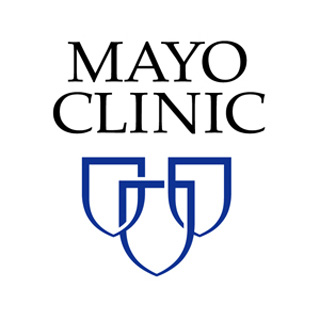Pericardial Resection to Treat Heart Failure
| Status: | Recruiting |
|---|---|
| Conditions: | Cardiology |
| Therapuetic Areas: | Cardiology / Vascular Diseases |
| Healthy: | No |
| Age Range: | 18 - Any |
| Updated: | 1/6/2019 |
| Start Date: | March 20, 2017 |
| End Date: | October 1, 2020 |
| Contact: | Jonathan D Furuseth |
| Email: | Furuseth.Jonathan@mayo.edu |
| Phone: | 507-255-1202 |
The Effects of Pericardiotomy on Diastolic Reserve in Humans
The researchers are doing this study to find out whether there will be less increase in
cardiac filling pressure after the surgeon opens the pericardium (the membrane around the
heart) than when the pericardium is intact. The researchers want to see whether opening the
pericardium is an effective way to reduce the blood filling pressures in the heart.
cardiac filling pressure after the surgeon opens the pericardium (the membrane around the
heart) than when the pericardium is intact. The researchers want to see whether opening the
pericardium is an effective way to reduce the blood filling pressures in the heart.
This study will enroll patients with risk factors for LV diastolic dysfunction, either
coronary artery disease or aortic stenosis, who are already undergoing cardiac surgery for
clinical purposes (e.g. coronary artery bypass grafting or valvular heart disease).
Hemodynamic tests will be performed using standard clinical resources used as part of routine
care in this setting, including pulmonary artery (PA) catheterization. After obtaining
written informed consent, patients will undergo induction with general anesthesia as per
clinical practice. The chest will be open but pericardium left intact. Cardiac hemodynamics
(PA wedge pressure, PAWP; PA pressure, PAP, right atrial pressure, RAP) will be measured
using PA catheter already in place at rest, and then during conditions of increased cardiac
preload, induced by passive leg elevation and saline bolus (300 ml administered over 1-2
minutes).
The surgical team will then perform anterior pericardiotomy, with removal of pericardial
restraint similar to our percutaneous approach but using currently-available surgical tools.
This will not be a complete pericardiectomy but rather a limited anterior incision to gain
access to the heart for surgical exposure (standard care).
The surgical team will then repeat hemodynamic assessments at rest and with acute volume
loading (leg raise + saline) in exactly the same manner as with the pericardium intact. Our
hypothesis is that as compared to pericardium intact, the increase in PAWP with volume
loading will be reduced following opening of the pericardium.
coronary artery disease or aortic stenosis, who are already undergoing cardiac surgery for
clinical purposes (e.g. coronary artery bypass grafting or valvular heart disease).
Hemodynamic tests will be performed using standard clinical resources used as part of routine
care in this setting, including pulmonary artery (PA) catheterization. After obtaining
written informed consent, patients will undergo induction with general anesthesia as per
clinical practice. The chest will be open but pericardium left intact. Cardiac hemodynamics
(PA wedge pressure, PAWP; PA pressure, PAP, right atrial pressure, RAP) will be measured
using PA catheter already in place at rest, and then during conditions of increased cardiac
preload, induced by passive leg elevation and saline bolus (300 ml administered over 1-2
minutes).
The surgical team will then perform anterior pericardiotomy, with removal of pericardial
restraint similar to our percutaneous approach but using currently-available surgical tools.
This will not be a complete pericardiectomy but rather a limited anterior incision to gain
access to the heart for surgical exposure (standard care).
The surgical team will then repeat hemodynamic assessments at rest and with acute volume
loading (leg raise + saline) in exactly the same manner as with the pericardium intact. Our
hypothesis is that as compared to pericardium intact, the increase in PAWP with volume
loading will be reduced following opening of the pericardium.
Inclusion
- >17 years old
- Subjects having open sternotomy for either aortic valve stenosis or coronary artery
bypass grafting (or both)
- Provide informed consent Exclusion
- <18 years old
We found this trial at
1
site
200 First Street SW
Rochester, Minnesota 55905
Rochester, Minnesota 55905
507-284-2511

Phone: 507-284-8846
Mayo Clinic Rochester Mayo Clinic is a nonprofit worldwide leader in medical care, research and...
Click here to add this to my saved trials